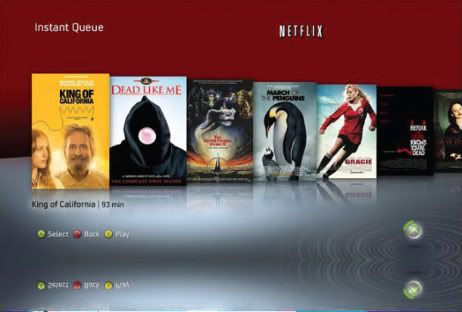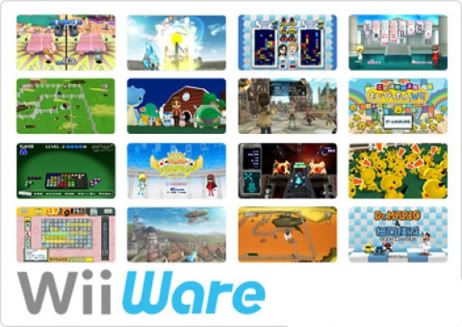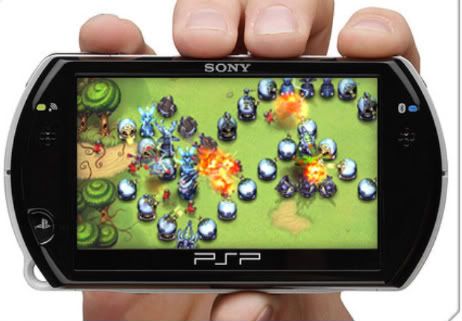
The growth in digital app stores can’t have passed by the average Critical Gamer (see what I did there?). Every device has one, from the DSi to the Playstation 3, and they have opened up new distribution channels for existing developers and publishers, as well as enabling new, much smaller creators to be able to reach out to the consumer and sell them new, less commercially attractive products.
Downloading games is not the ‘new promised land’ which platform holders are telling us it is. Firstly it’s not even that new. I’ve been downloading games to my mobile phone since around 2003 on what was, I believe, a Nokia 3650. Back then it was left to the networks themselves to provide the content as the hardware companies didn’t yet have the coordination or even leverage over the consumer (and with the networks) allowing them to provide these products themselves.
The ‘app stores’ in place then were far from being the seamless and enjoyable experience that today’s stores offer (well most of them), however they were hardly difficult to navigate either. All one had to do was go through a few WAP pages and then after spending £1.50 or whatever the cost was, you had your application in your games or download folder on the phone. Indeed I remember getting a rather good platform version of Splinter Cell! The trade press at the time often had articles on how this was the future (well, actually it was the present) and how traditional videogame companies would have to take this market seriously.
Downloading games to PC is also something which is not new. Valve’s Steam service has been selling games since around 2004/5 but it’s been possible to buy games directly from developers since before that. Steam was a milestone as it brought the idea of a games marketplace embedded into a gaming virtual ‘space’ where people can compete, collaborate and share gaming news and content together into a well run and branded experience. In many ways, Steam and Xbox Live’s developments were in parallel and have clearly influenced each other.

So since about 2002 we have been downloading games in a big way, and along the way there have been some failed to attempts to ‘wrap’ it together into a seamless user experience. Examples include an online component of the failed Dreamcast console to ongoing attempts by the mobile phone networks to somehow convert their phoning and texting customers to downloading and surfing customers. The mobile networks even started installing their own software on certain handsets to try to ‘lock’ the user into their experience.
What has stopped these efforts being successful differ but common themes include not having any interesting content or games consumers want to download. Additionally, the slow speed of the connection or the clumsy way in which the apps are downloaded have helped in putting off the consumer. Price, of course, is a major barrier to getting consumers to try something new as well. In recent years a number of these issues have been overcome, most importantly the price of storage and the speed at which data can be downloaded to a device at home or one which is mobile.
On the console and PC front, Xbox and Steam (and to a lesser degree Metaboli and Direct 2 Drive type platforms) have become the de facto standard for downloading content to living room or desktop machines. Sony’s PSN and even Nintendo with its Wiiware and Virtual console have followed suit with less success. In the mobile space success, although always predicted to be around the corner, remained allusive. Traditional consoles such as the DS and PSP still used physical media and mobile phone companies and the hardware makers were failing to provide a suitable solution which was being adopted by the mainstream.

Then along came Apple. Famous for having made buying music online something everyone could do, they brought along the same business approach to applications for their handheld phone – the Iphone, and subsequently their Itouch product. Their store was simple for everyone involved in it to operate, supply and purchase from. Developers only had to pay $99 and they could develop for it which was a first as other platform holders required developers to purchase expensive SDKs needed to code and produce content for their services. Consumers liked the service as it was easy to see what was available, fast to browse and very fast to download. Additionally the prices for applications were very cheap with many of them offering free trial versions. The other major plus point for Apple was that their hardware was easy to use, and of course, a phone – something people want anyway.
Now what’s been great about Apple’s app store is that it demonstrated the viability of small, cheap to produce apps. Small indie developers could come up with a game design, which would never see the light of day in a boxed game, self publish it and have an income derived from their efforts. The result of this success has been copycat initiatives. Xbox Live has welcomed more independents even going as far as having a secondary store for smaller, even more indie games. These are not vetted by Microsoft but instead quality control is given to the developer and community audience. Nintendo released Wiiware, which includes new indie games, and Sony have encouraged similar projects onto their PSN network.

It’s the handheld market though, quite rightly, which has been shaken up most by Apple’s move into digital distribution and portable computing. Nintendo’s Dsi is clearly a stop gap before the DS2 which allows it to offer some of the same features the ‘Iphone generation’ have already become used to and now expect. Hence it has (for Nintendo) some basic social community features (upload your photos to facebook from the device) and most importantly it has the DSiware store. This is is Nintendo’s digital app store! Similar to Wiiware, this is clumsy and uses some kind of cut down browser (with no cache from what I can see). Purchasing points which can then be traded for applications works (but seems dated) and accessing the content once it’s downloaded is well implemented.
Sony have released their PSPGo, but the hardware aside, they have used this as an opportunity to launch the Minis, a range of small apps. These are so similar to Iphone apps, that many of them are Iphone apps! Also, all ‘triple A’ PSP titles are being released on the PSN store and much of the back catalogue too.

So where does all this digital activity leave us? Well, clearly there is still lots of opportunity and it’s still really great for consumers and developers as a whole. However, it’s not all great. We now have a new tussle between Apple’s agenda and Sony and Nintendo’s. Apple, as with music, does not really care about how much it sells the software for, and so far, it hasn’t really shown much interest in maintaining the standard, rather just the quantity. This makes sense as they are in the business of selling hardware, and they are really good at it! However both Sony and Nintendo need to have their platforms seen as different from the Iphone (and the many Iphone lookalikes being released on a weekly basis). Additionally they make much more money from the software than Apple.
Hence both Sony and Nintendo are at present putting significantly less content on their stores with limited weekly updates, with the hope of helping developers to maintain the value of their content for as long as possible. Indeed games on the PSN store and Dsiware are on average £1-£2 more expensive than on the Iphone, and rarely do you get a free trial version in advance. Nintendo have not helped their cause by putting clocks and calenders on the store which should already be installed on the device or which should be allowed to be downloaded for free – it would be a good way of having people regularly come back to and engage in the store. Whilst there, they then might buy a high quality app.
The problem traditional videogame companies may find is that it’s too late. Just as the music industry allowed Apple to change the pricing model overnight it would seem that the videogame companies have allowed Apple to do the same thing in their marketplace.

The upshot is clear; more people can find a market to distribute their goods. The bad news is that many of them will have to distribute them for free or near to free, or find that in the huge marketplace that is the Appstore no one can find your app. Even companies such as EA are struggling, not quite sure what kind of content to produce, and then how much to invest marketing it, when the return is potentially small.
“Apple has achieved over two billion downloads since the launch of its App Store on to a device base of over 50million iPhone and iPod touch devices, this suggest an average of 40 apps per device. The volume of apps being downloaded per user suggests that the user’s behaviour is mimicking that on browsers, with users viewing lots of different sites; however, there are only a few which users visit repeatedly.” said Adam Leach, Principal Analyst, Ovum.
“Although Apple’s download figures are impressive and act as a harbinger for the industry, it is important to consider that the typical high-end iPhone users are not representative of mobile users as a whole”
“Apple has demonstrated for the first time that demand for third party applications can drive demand for devices”
Ironically it would seem that Apple have learnt a lot from their gaming competitors. Just as with Nintendo’s own Pokemon franchise (which is a license to print money), Apple have realised that the application and game consumers like playing most is the App Store itself. They can’t help themselves and they just have to ‘catch em all’!




















While it’s true that the Appstore’s doing very well, I think you’ve touched on an importiant (and often missed) point at the end. That is, people like to just browse! I’m guilty of that myself of my iPhone, and glad too as some of the free stuff I download is so bad, if I had paid money for it, I’d be VERY annoyed. I think the whole ‘promised land’ of downloading has begun, but it’s in it’s infant stage as far as Joe Soap is concerned.
Ninty need to get their finger out as far as the DSi ware’s concerned, but I think your right about it being a stop-gap till the DS2. I think the Go’s a toe in the water too, and expect a new PSP in at least a year’s time.
Nice read man, and some good points too.